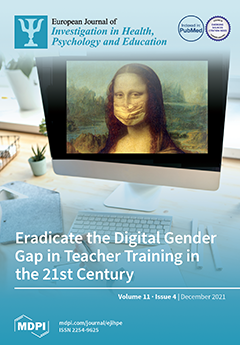Sexuality is defined as a multidimensional experience that involves genital, mental, and bodily components. It is also assumed as a basic condition inherent to the human existence that encourages the search for love, intimacy, sex, and proximity to others. The main objective of
[...] Read more.
Sexuality is defined as a multidimensional experience that involves genital, mental, and bodily components. It is also assumed as a basic condition inherent to the human existence that encourages the search for love, intimacy, sex, and proximity to others. The main objective of this study is to assess the relationship between cues of sexual desire and sexual attitudes in Portuguese women. This is a cross-sectional study with 804 Portuguese women to whom the protocol was applied. It included an informed consent, a sociodemographic questionnaire, a questionnaire related to intimacy, a scale of sexual attitudes, and the scale of cues of sexual desire. The protocol was applied via Google Forms due to the current pandemic situation (COVID-19). Differences were found in sexual attitudes and the cues of sexual desire in terms of sociodemographic characteristics, as well as in terms of women’s intimacy. Significant correlations were found between the brief sexual attitudes scale (BSAS) and the cues of sexual desire scale (CSDS). Age, sexual orientation, relation nature, sexual practices, visual proximity cues, erotic explicit cues, and sensory explicit cues explain, altogether, 25% of the total sexual attitudes. Additionally, age, sexual orientation, the relation’s nature, sexual practices, visual proximity cues, emotional bonding cues, romantic implicit cues, erotic explicit cues, and sensory explicit cues explain, altogether, 30% of the permissiveness. Sexual attitudes are developed under the influence of sociodemographic variables, variables related to women’s intimacy, and cues of sexual desire, which are new data in the study of sexual attitudes and have implications at the level of gender issues.
Full article






